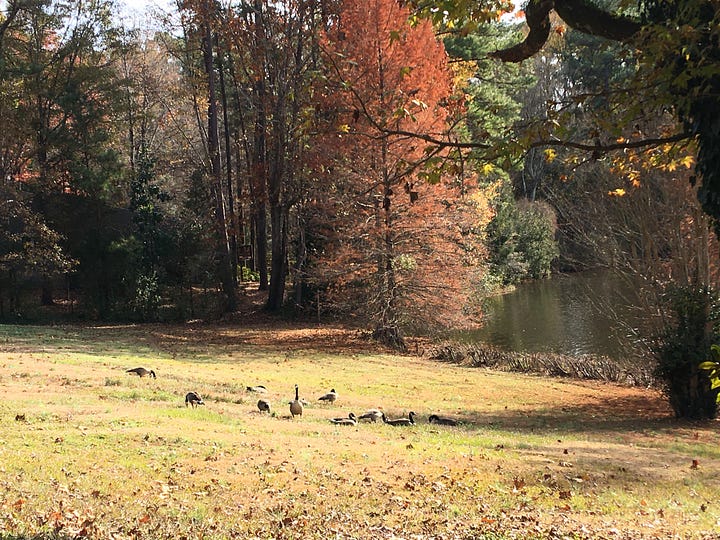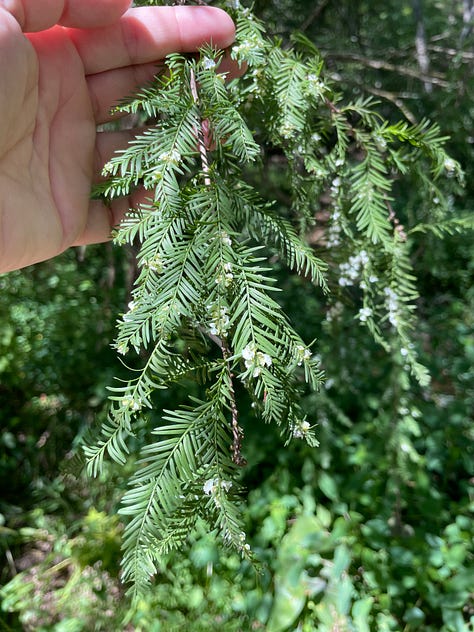During my last guided plant walk our group had the opportunity to observe forest wetland plants from a slightly elevated boardwalk in a city park. I have no doubt that the boardwalk protected the sensitive ecosystem from being trampled into oblivion by folks who might have otherwise been drawn to the creek on a hot day. (I know this because I am one of those people who must be near creeks in the summer.) We observed a huge variety of lush forest plants, but perhaps the most impressive was the bald cypress.


I’m not sure which unique aspect of a bald cypress tree appears to the observer first. It could be the feathery needles, which resemble a softer pine and which turn brown in the autumn and drop in the winter due to the bald cypress being a rare deciduous conifer. Or maybe it’s the perfectly spherical cones dangling from the end of the soft, ferny branches. On the day that we observed our bald cypress trees they had a strange small flower-like growth on the branches which we later discovered was, in fact, not a flower but rather a gall caused by the Cypress Flower Gall Midge. Thankfully these insects are not known to cause much damage to the trees, so we can enjoy the small “flowers” without guilt.



But perhaps the most identifying and yet perplexing feature of a bald cypress is its knees. These knees are a woody protuberance that sticks up from the ground around a tree and has no conclusively known use. It is possible that the knees exist to increase the tree’s access to air when it is growing in a wet environment. They may also exist to steady these large and long-lived giants in an otherwise unstable and damp environment. Or maybe they serve to catch debris floating by to add to the tree’s organic matter near the roots. My favorite opinion (that I recently spotted on the internet but failed to save the source) is that cypress knees are a relic from the past and were a way to prevent dinosaurs from coming too close and browsing the branches. Interestingly, knees can be suppressed by simply mowing around the tree as it is growing. A pause in mowing allows the knees to grow normally.



The knees do contribute aesthetically to the swampy environment surrounding a bald cypress. Perhaps it was this quality that was most attractive to our plant walk group as we navigated the cool forest of a city park on a hot summer day. Whatever it was, we all enjoyed our time with these enigmatic giants of the wetland forest.
If you are in the Raleigh, NC area and would like to join me for a guided public plant walk subscribe to this newsletter so you don’t miss an announcement.
Photos ©2023 Amber Gorski and Christin Kathleen Whatley




I like the prehistoric theory of the knees. In Louisiana, where they typically grow in water, we always figured they served to capture soil for the cypress balls.